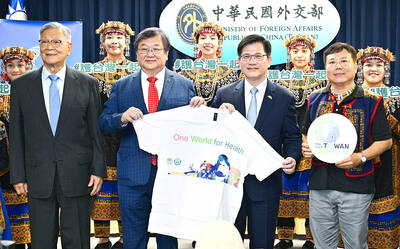Heralding a possible renaissance for supercomputing technology in the US, IBM is planning the construction on what will ultimately become the world's most powerful supercomputer, under a contract with the Department of Energy.
In recent years the US supercomputer industry has been in the doldrums as government funding has slowed and desktop computing performance has accelerated. However, the new IBM machine is the second recent sign of a revival. Last week Cray Inc announced a more powerful computer design called the Cray X1.
The IBM announcement, which is to be made at a supercomputer industry show in Baltimore today, is part of a contract for two supercomputers to be awarded by the Department of Energy and valued at US$290 million. The computers are to be installed at the Lawrence Livermore National Laboratory in Livermore, California.
When both machines are in full operation, which is expected to occur before the end of 2005, the two supercomputers will have a higher theoretical peak capacity than the entire current list of the 500 fastest supercomputers in the world today, according to IBM executives.
Computer scientists said the new wave of supercomputers is evidence of a reinvigorated industry that is pushing to reach computer speeds of a petaflop -- a thousand trillion mathematical operations per second -- by the end of this decade.
"This is an exciting time," said Jack Dongarra, a University of Tennessee computer scientist who tracks the speeds of the fastest computers. "There is a buzz of excitement in the air and it appears that there is a real commitment to stress the technology."
The first of the two new IBM machines, named Blue Gene/L, will be made of 130,000 advanced IBM-manufactured microprocessors and could reach peak computing speeds as high as 360 trillion mathematical operations per second. That would be more than 10 times the speed of what is currently the world's fastest supercomputer, a Japanese machine known as the Earth Simulator made by NEC.
When the Earth Simulator's performance was announced earlier this year it took US computer experts by surprise. Up until then the US had dominated the world of high performance computing for a number of years.
A number of leading computer scientists said at the time the Japanese leadership was emblematic of the disappointing state of the industry in the US.
In addition to Blue Gene/L, IBM also said it had received a second Department of Energy award to build a more powerful supercomputer for the Advanced Simulation and Computing Initiative. That machine will be based on an array of 12,000 of IBM's Power5 microprocessor chips, an advanced computing engine that is still in development.
The announcement of an ultra-fast computer that is intended both for basic science and classified research is seen as a significant step by American researchers and business executives who have worried that the US was lagging in basic science capabilities.
"With something like Blue Gene/L we have the ability to help people solve some of the demanding problems of everyday life in the world we live in," said Nicholas Donofrio, IBM's senior vice president for technology and manufacturing.
IBM said that the second supercomputer will largely be involved in classified military computing as part of the effort to simulate nuclear weapons and the aging of the US nuclear weapons stockpile.
The machine, to be named ASCI Purple, will be delivered during 2003 and 2004 and will ultimately offer eight times the computing power of the existing ASCI Blue computer now being used by the Livermore Laboratory for weapons research.

Nvidia Corp yesterday unveiled its new high-speed interconnect technology, NVLink Fusion, with Taiwanese application-specific IC (ASIC) designers Alchip Technologies Ltd (世芯) and MediaTek Inc (聯發科) among the first to adopt the technology to help build semi-custom artificial intelligence (AI) infrastructure for hyperscalers. Nvidia has opened its technology to outside users, as hyperscalers and cloud service providers are building their own cost-effective AI chips, or accelerators, used in AI servers by leveraging ASIC firms’ designing capabilities to reduce their dependence on Nvidia. Previously, NVLink technology was only available for Nvidia’s own AI platform. “NVLink Fusion opens Nvidia’s AI platform and rich ecosystem for

‘WORLD’S LOSS’: Taiwan’s exclusion robs the world of the benefits it could get from one of the foremost practitioners of disease prevention and public health, Minister Chiu said Taiwan should be allowed to join the World Health Assembly (WHA) as an irreplaceable contributor to global health and disease prevention efforts, Minister of Foreign Affairs Lin Chia-lung (林佳龍) said yesterday. He made the comment at a news conference in Taipei, hours before a Taiwanese delegation was to depart for Geneva, Switzerland, seeking to meet with foreign representatives for a bilateral meeting on the sidelines of the WHA, the WHO’s annual decisionmaking meeting, which would be held from Monday next week to May 27. As of yesterday, Taiwan had yet to receive an invitation. Taiwan has much to offer to the international community’s

CAUSE AND EFFECT: China’s policies prompted the US to increase its presence in the Indo-Pacific, and Beijing should consider if this outcome is in its best interests, Lai said China has been escalating its military and political pressure on Taiwan for many years, but should reflect on this strategy and think about what is really in its best interest, President William Lai (賴清德) said. Lai made the remark in a YouTube interview with Mindi World News that was broadcast on Saturday, ahead of the first anniversary of his presidential inauguration tomorrow. The US has clearly stated that China is its biggest challenge and threat, with US President Donald Trump and US Secretary of Defense Pete Hegseth repeatedly saying that the US should increase its forces in the Indo-Pacific region

ALL TOGETHER: Only by including Taiwan can the WHA fully exemplify its commitment to ‘One World for Health,’ the representative offices of eight nations in Taiwan said The representative offices in Taiwan of eight nations yesterday issued a joint statement reiterating their support for Taiwan’s meaningful engagement with the WHO and for Taipei’s participation as an observer at the World Health Assembly (WHA). The joint statement came as Taiwan has not received an invitation to this year’s WHA, which started yesterday and runs until Tuesday next week. This year’s meeting of the decisionmaking body of the WHO in Geneva, Switzerland, would be the ninth consecutive year Taiwan has been excluded. The eight offices, which reaffirmed their support for Taiwan, are the British Office Taipei, the Australian Office Taipei, the